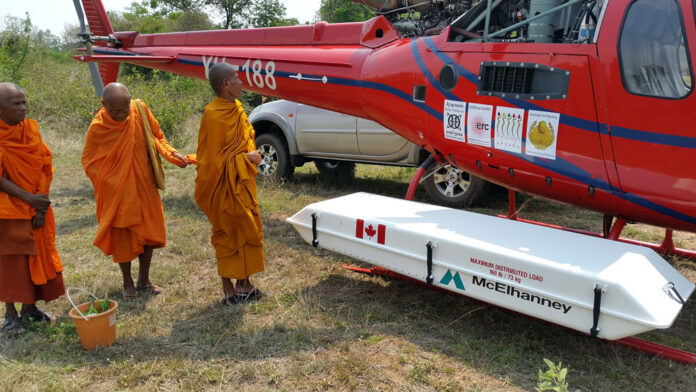
PHNOM PENH — Tests have confirmed that a wooden boat found buried in a dry riverbed near Cambodia’s famous Angkor Wat temple complex is from the early 13th century, an official at the agency overseeing the archaeological site said Monday.
Apsara Authority spokesman Long Kosal said tests by a research institute in New Zealand confirmed the age of the 12.8-meter-long boat, which was carved from a single tree trunk. He said it is the oldest boat ever found in Cambodia, and its discovery will be useful for scholars of the Angkor era, when the Khmer empire dominated the region from the 9th to 15th centuries.
Read: Remnants of Ancient Underground City Discovered Beneath Angkor Wat
A farmer discovered the boat in April while digging mud from the riverbed, several kilometers from the temple complex. The boat has been sunk in a pond in front of the temple to keep it preserved pending restoration for public viewing. Photos of it can be found in the Phnom Penh Post.
An Australian archaeologist announced earlier this month that he and colleagues have found evidence of previously undiscovered medieval urban and agricultural networks surrounding the ancient city of Angkor Wat.
Using high-tech lasers to scan the Cambodian jungle, Damian Evans and colleagues said they found traces of extensive networks surrounding the monumental stone temple complex at Angkor Wat. Evans said their findings could further our understanding of Khmer culture and throw into question traditional assumptions about the decline of the empire.
For years, experts have proposed a variety of reasons for the collapse of the Khmer civilization in the 15th century, including invasions by Thai armies, social and religious change, internal power struggles, and overpopulation and prolonged drought which forced populations to relocate to southern Cambodia. But Evans said their laser maps showed no evidence of relocated, dense cities in the south and that it wasn’t clear there was any such mass migration.
Story: Sopheng Cheang









































